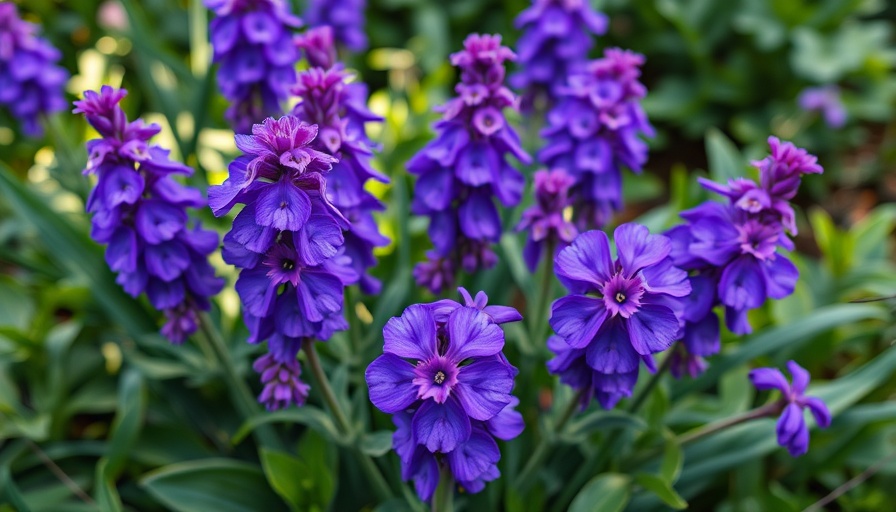
Create Your Own Shade Oasis with Perennials
If you’ve ever wandered through a lush garden, basking in the mimicked warmth of sunlight found beneath towering trees, you know the joy of a well-planned shade garden. This living space offers not just a break from the sun but a palette of colors and textures composing a tranquil refuge. In this article, we’ll dive deep into the world of perennials for shade, featuring 13 stunning favorites that not only thrive in low-light conditions but also elevate the beauty of your garden season after season.
Understanding Perennials: A Gardener’s Best Friends
When it comes to building a garden, perennials are your go-to plants. Unlike annuals that bloom for a single season, these hardy companions return year after year, coming alive after a dormant period. The beauty of choosing perennials lies in their diverse blooming times. This staggered blooming not only creates a calendar of floral treasures but also allows for creative gardening. Imagine flowers cascading into bloom from early spring to late fall, providing texture and lively colors all throughout the growing season.
Thirteen Must-Have Perennials for Your Shade Garden
Here’s a curated list of our favorite shade-loving perennials that can transform your garden:
- Foamflower (Tiarella cordifolia) - This native perennial creates a frothy display of white blooms each spring, thriving in shady locations. Its self-propagating nature means it spreads beautifully along paths.
- Doll’s Eyes (Actaea pachypoda) - Not only striking with its clear white flowers, but it also produces eerie, toxic berries in the fall, adding an intriguing element to your garden.
- Wake Robin (Trillium species) - With delicate flowers that come in shades of white, yellow, or red, Trilliums offer elegance and beauty, which make them a stunning focal point in a shady setting.
- Meadow Rue (Thalictrum species) - A tall beauty, meadow rue brings soft white flowers to your shade garden alongside feathery foliage, adding height and drama.
- Hostas (Hosta spp.) - Known for their large, lush leaves, hostas thrive in shade and offer a variety of textures and colors that make them a staple in many gardens.
- Astilbe (Astilbe spp.) - Known for their fluffy, plume-like flowers, these plants add a pop of color to the shade garden while enjoying moist soil conditions.
- Japanese Painted Fern (Athyrium niponicum) - With its intricate, lacy foliage colored in shades of silver and green, this fern provides a unique texture year-round.
- Lungwort (Pulmonaria spp.) - One of the first perennials to bloom in spring, lungwort features lovely spotted leaves and clusters of blue or pink flowers.
- Coral Bells (Heuchera spp.) - These colorful foliage plants thrive in shade and provide a kaleidoscope of colors and textures, highlighted by delicate flower spikes.
- Goat’s Beard (Aruncus dioicus) - Offering a very airy effect in a shady area, goat’s beard features feathery white flowers reminiscent of a plume.
- Bleeding Heart (Lamprocapnos spectabilis) - With heart-shaped flowers that dangle from their stems, these perennials evoke an ideal romantic garden vibe.
- Geraniums (Geranium spp.) - Ideal for shady spots, geraniums offer lush foliage and charming flowers that bloom all summer.
- Barberry (Berberis spp.) - Known for their shiny and colorful foliage, barberries provide year-round interest but need careful site planning due to their invasive nature.
Crafting Your Dream Shade Garden
When designing your shade garden, incorporating different heights, colors, and textures creates a visually appealing and engaging space. Follow the golden combination of layering your plants: taller perennials at the back, mid-height in the center, and shorter ones up front. This not just gives depth but also showcases each plant's unique beauty.
Future Trends: Embracing Shade Gardening
With increasing urbanization and the growth of homes with limited sunlight exposure, more people are recognizing the value of shade gardens. The transition towards sustainable gardening practices encourages eco-friendly landscaping, emphasizing the importance of selecting native shade-friendly plants. The demand for education on shade gardening will grow, allowing homeowners to create more inviting and lush outdoor spaces.
Call to Action: Start Your Shade Garden Journey Today!
Building your dream shade garden is not just an idea but an engaging project that comes with months of enjoyment and labor. With the right perennials for shade, you can transform your outdoor space into a picturesque retreat. Take the first steps today: visit a local nursery, select your favorites, and start planting!
 Add Row
Add Row  Add
Add 




Write A Comment